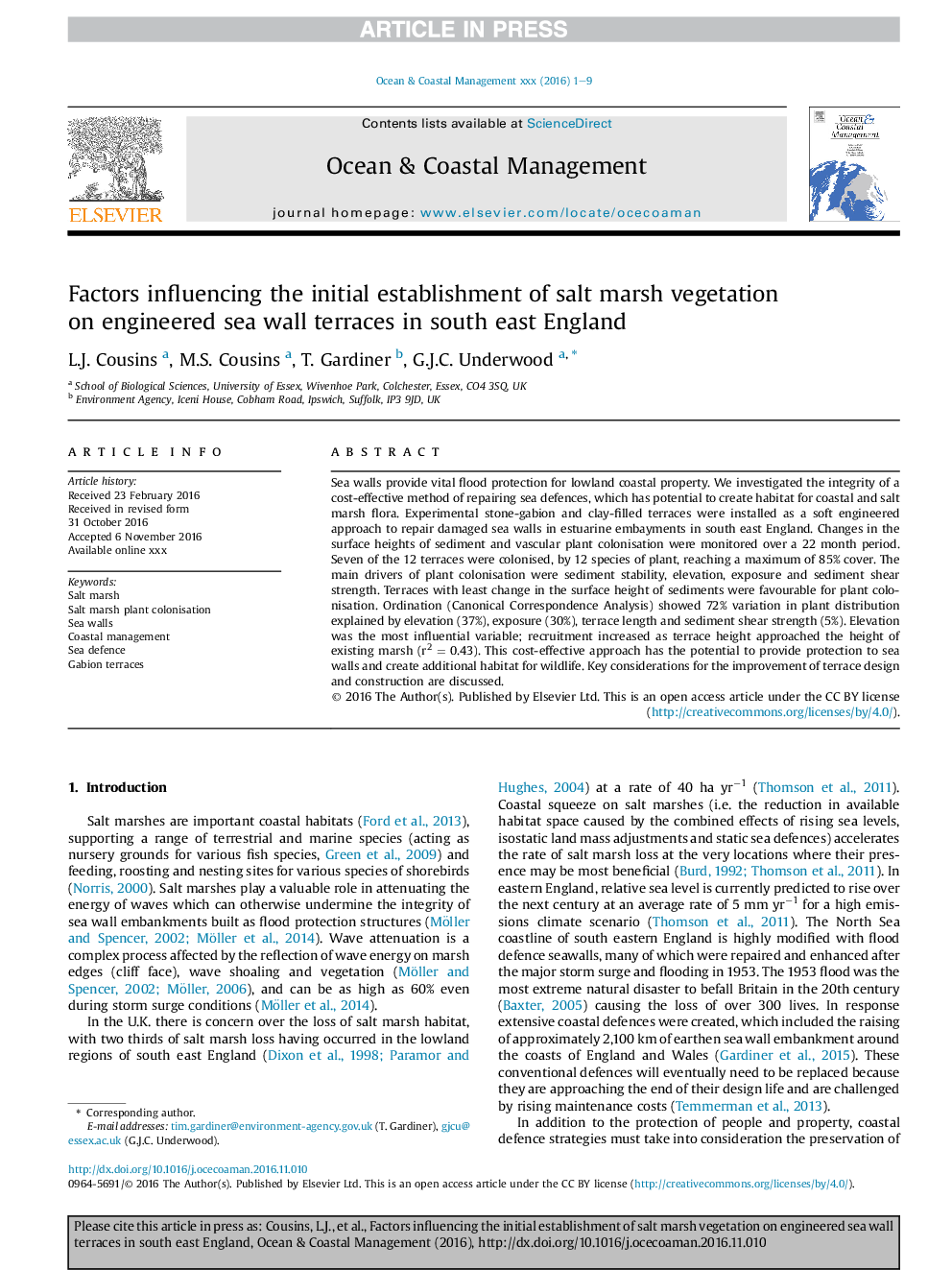| Article ID | Journal | Published Year | Pages | File Type |
|---|---|---|---|---|
| 5473779 | Ocean & Coastal Management | 2017 | 9 Pages |
Abstract
Sea walls provide vital flood protection for lowland coastal property. We investigated the integrity of a cost-effective method of repairing sea defences, which has potential to create habitat for coastal and salt marsh flora. Experimental stone-gabion and clay-filled terraces were installed as a soft engineered approach to repair damaged sea walls in estuarine embayments in south east England. Changes in the surface heights of sediment and vascular plant colonisation were monitored over a 22 month period. Seven of the 12 terraces were colonised, by 12 species of plant, reaching a maximum of 85% cover. The main drivers of plant colonisation were sediment stability, elevation, exposure and sediment shear strength. Terraces with least change in the surface height of sediments were favourable for plant colonisation. Ordination (Canonical Correspondence Analysis) showed 72% variation in plant distribution explained by elevation (37%), exposure (30%), terrace length and sediment shear strength (5%). Elevation was the most influential variable; recruitment increased as terrace height approached the height of existing marsh (r2Â =Â 0.43). This cost-effective approach has the potential to provide protection to sea walls and create additional habitat for wildlife. Key considerations for the improvement of terrace design and construction are discussed.
Keywords
Related Topics
Physical Sciences and Engineering
Earth and Planetary Sciences
Oceanography
Authors
L.J. Cousins, M.S. Cousins, T. Gardiner, G.J.C. Underwood,
